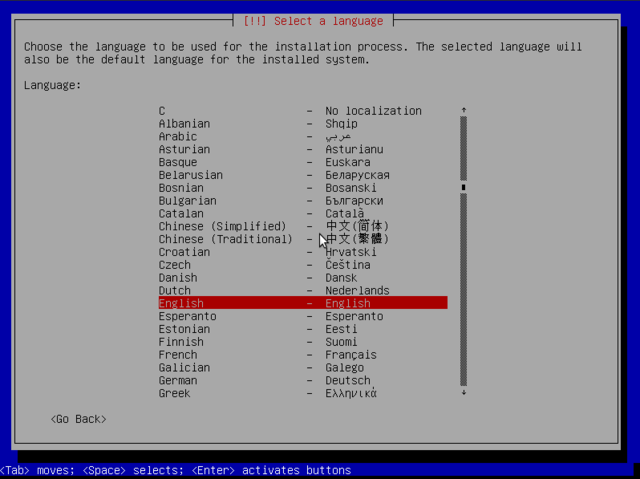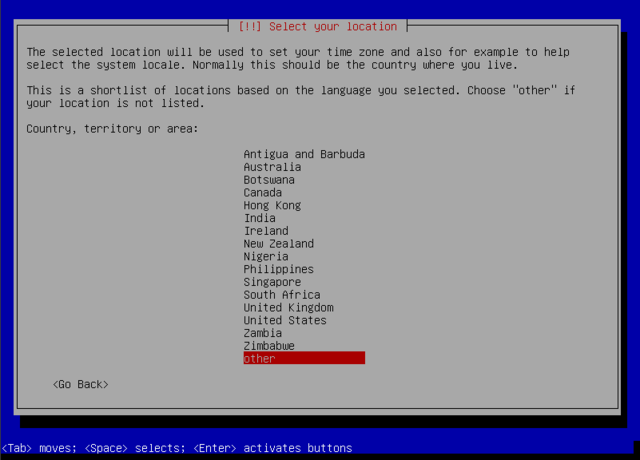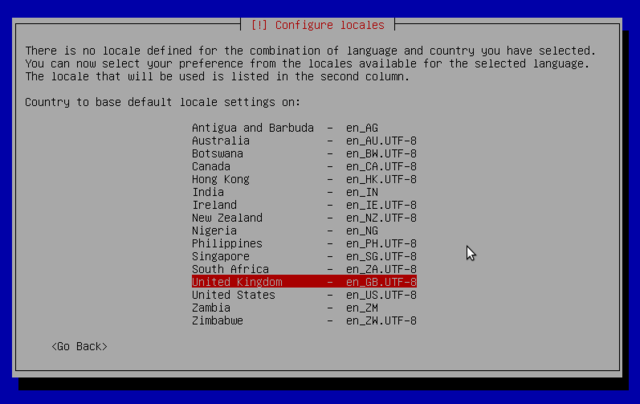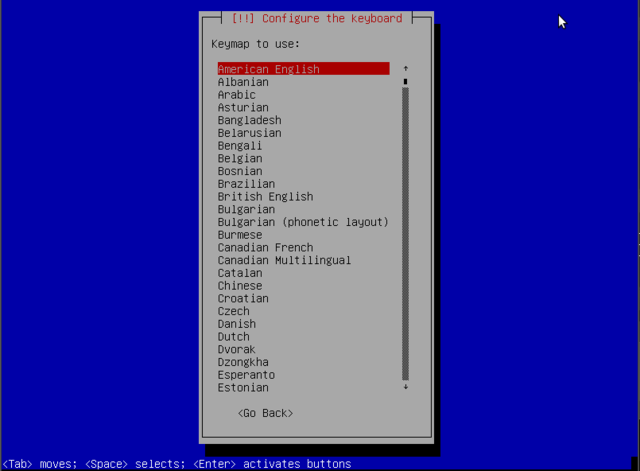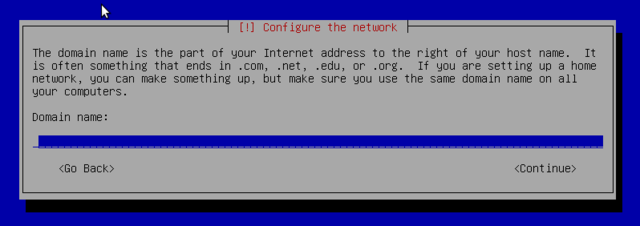Difference between revisions of "Installing linux"
From Gender and Tech Resources
m |
m (→Debian) (Tag: VisualEditor) |
||
| Line 7: | Line 7: | ||
=== DVD === | === DVD === | ||
| + | |||
| + | == Dual boot == | ||
| + | You can have both windows and linux on your machine, each installed on a separate disk or partition, and choose which to start when booting. This configuration is called "dual boot", and the debian installation system can set it up during the hard drive partitioning stage of installation and setting up the bootloader. | ||
| + | |||
| + | Debian offers a windows program that will download and set up a 32 bit debian installer. You then only need to reboot the computer and choose between normal windows boot or booting the installation program. Let me know if still wurks (currently I have no machine with windows for testing it). You can find it here http://ftp.debian.org/debian/tools/win32-loader/stable/ and here http://goodbye-microsoft.com/. | ||
== Installing mint == | == Installing mint == | ||
| Line 14: | Line 19: | ||
== Debian == | == Debian == | ||
| − | === Download | + | === Download === |
Download for your preferred medium from https://www.debian.org/releases/jessie/debian-installer/ | Download for your preferred medium from https://www.debian.org/releases/jessie/debian-installer/ | ||
| Line 23: | Line 28: | ||
''x86_64'' means a 64-bit kernel and ''i686'' means a 32-bit kernel. In windows try this https://support.microsoft.com/en-us/kb/827218 | ''x86_64'' means a 64-bit kernel and ''i686'' means a 32-bit kernel. In windows try this https://support.microsoft.com/en-us/kb/827218 | ||
| − | <strong>Note: you can install a 32-bit kernel on a 64-bit CPU. </strong>The fundamental difference between 32 and 64 bit systems is the size of memory addresses. In theory, a 32 bit system can not work with more than 4 GB of RAM (2<sup>32</sup> bytes). In practice, it is possible to work around this by using the ''686-pae'' kernel, so long as the processor handles the PAE (Physical Address Extension) | + | <strong>Note: you can install a 32-bit kernel on a 64-bit CPU. </strong>The fundamental difference between 32 and 64 bit systems is the size of memory addresses. In theory, a 32 bit system can not work with more than 4 GB of RAM (2<sup>32</sup> bytes). In practice, it is possible to work around this by using the ''686-pae'' kernel, so long as the processor handles the PAE (Physical Address Extension). There is a performance price to pay for this, so if you are installing on a server with a huge amount of RAM, use the 64 bit kernel. |
To learn more about your CPU in linux do: | To learn more about your CPU in linux do: | ||
$ cat /proc/cpuinfo | $ cat /proc/cpuinfo | ||
For windows you can type dxdiag in the run box. | For windows you can type dxdiag in the run box. | ||
| + | |||
| + | === Verify === | ||
Verify the md5 or sha256 checksum of the downloaded .iso file linux with: | Verify the md5 or sha256 checksum of the downloaded .iso file linux with: | ||
$ md5sum debian-8.1.0-amd64-DVD-1.iso | $ md5sum debian-8.1.0-amd64-DVD-1.iso | ||
| Line 38: | Line 45: | ||
Verify all dowloaded iso's. | Verify all dowloaded iso's. | ||
| − | === | + | === Standard install with MATE === |
Boot from the USB, CD- or DVD-ROM and in the Isolinux bootloader menu choose install:[[File:Install.png|640px||thumb|center]]Choose language (this sets language for both the installation process as well as for the to-be-installed linux):[[File:Select-a-language.png|640px||thumb|center]]Select location. It doesn't have to be where you actually are. And you can change it later. It sets what repositories you use, but even that can be changed later.[[File:Select-location.png|640px||thumb|center]] | Boot from the USB, CD- or DVD-ROM and in the Isolinux bootloader menu choose install:[[File:Install.png|640px||thumb|center]]Choose language (this sets language for both the installation process as well as for the to-be-installed linux):[[File:Select-a-language.png|640px||thumb|center]]Select location. It doesn't have to be where you actually are. And you can change it later. It sets what repositories you use, but even that can be changed later.[[File:Select-location.png|640px||thumb|center]] | ||
Revision as of 18:51, 18 June 2015
blabla
Contents
Shopping for a linux distro
Installation media
Unetbootin
DVD
Dual boot
You can have both windows and linux on your machine, each installed on a separate disk or partition, and choose which to start when booting. This configuration is called "dual boot", and the debian installation system can set it up during the hard drive partitioning stage of installation and setting up the bootloader.
Debian offers a windows program that will download and set up a 32 bit debian installer. You then only need to reboot the computer and choose between normal windows boot or booting the installation program. Let me know if still wurks (currently I have no machine with windows for testing it). You can find it here http://ftp.debian.org/debian/tools/win32-loader/stable/ and here http://goodbye-microsoft.com/.
Installing mint
Installing ubuntu
Debian
Download
Download for your preferred medium from https://www.debian.org/releases/jessie/debian-installer/
If you are confused about whether your kernel is 32 or 64 bits, in linux do:
$ uname -m
x86_64 means a 64-bit kernel and i686 means a 32-bit kernel. In windows try this https://support.microsoft.com/en-us/kb/827218
Note: you can install a 32-bit kernel on a 64-bit CPU. The fundamental difference between 32 and 64 bit systems is the size of memory addresses. In theory, a 32 bit system can not work with more than 4 GB of RAM (232 bytes). In practice, it is possible to work around this by using the 686-pae kernel, so long as the processor handles the PAE (Physical Address Extension). There is a performance price to pay for this, so if you are installing on a server with a huge amount of RAM, use the 64 bit kernel.
To learn more about your CPU in linux do:
$ cat /proc/cpuinfo
For windows you can type dxdiag in the run box.
Verify
Verify the md5 or sha256 checksum of the downloaded .iso file linux with:
$ md5sum debian-8.1.0-amd64-DVD-1.iso
or for example:
$ sha256sum debian-8.1.0-amd64-DVD-1.iso
and compare the output with key listed for debian-8.1.0-amd64-DVD-1.iso in respectively http://cdimage.debian.org/debian-cd/8.1.0/amd64/iso-dvd/MD5SUMS and http://cdimage.debian.org/debian-cd/8.1.0/amd64/iso-dvd/SHA256SUMS Other checksums are also given.
Windows does not come with md5sum. There are command line utilities (md5sum.exe) and the version available from Cygwin is probably easiest to install and update. Once installed, Cygwin's md5sum behaves exactly as the md5sum described for linux above.
Verify all dowloaded iso's.

